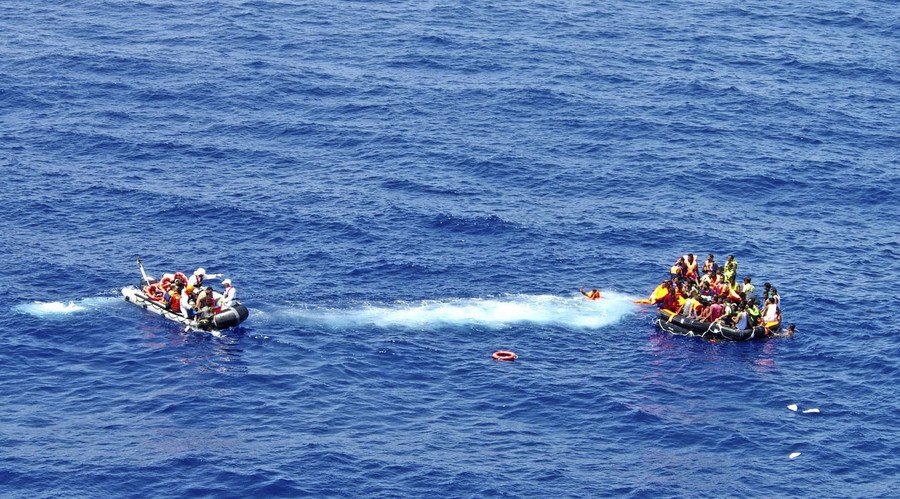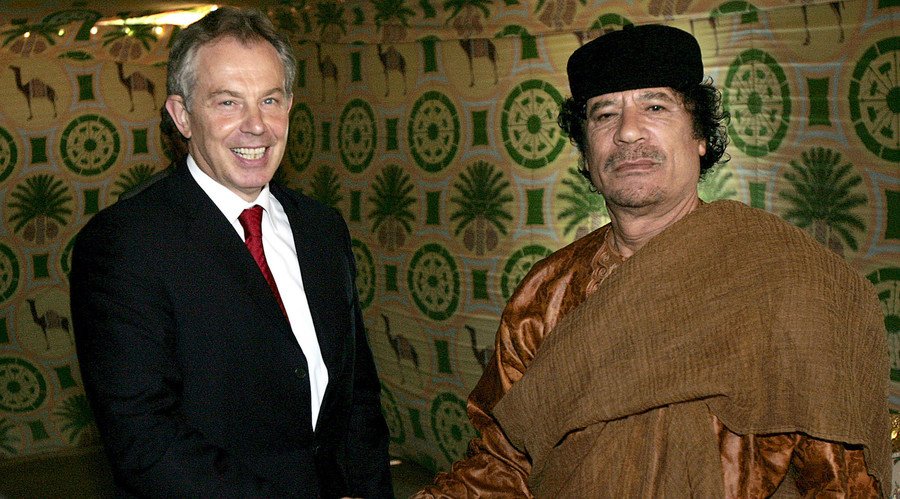5 years since Gaddafi’s killing, Libya still soaked in blood, but no sign of liberty tree growing
Five years ago, strongman Muammar Gaddafi, who had balanced Libyan factions to preserve stability, was hunted down and brutally killed by NATO-backed rebels, but ousting him has resulted in chaos and perpetual bloodshed rather than freedom and prosperity.
These days are busy for Libya. In the capital, Tripoli, a militant faction defied the UN-supported Government of National Unity (GNA) last Friday by declaring its own government. They have since seized a parliamentary building and exchanged sporadic gunfire with loyalist forces.
The GNA has no proper army of its own, so Tripoli is a patchwork of rival armed groups. Some back government officials, while others are linked to Islamist groups or militias in other cities. The situation is a reflection of Libya in general, where local warlords and tribal militias determine the daily lives of people with little regard to any central authority.
Ironically, the GNA was formed to overcome a division in Libya, which had lived with two rival governments for months. The one in Tripoli was formed by Islamists, while the one in Tobruk was deemed legitimate by the UN. However, the transition to the GNA sidelined a powerful general, Khalifa Haftar, who had been the Tobruk government’s defense minister, prompting him to oppose the new government. He is now the de facto ruler of Tobruk and doesn’t answer to Tripoli.
Meanwhile, US warplanes have been carrying out dozens of airstrikes around Muammar Gaddafi’s home city, Sirte, which fell to Islamic State (IS, formerly ISIS/ISIL) militants more than a year ago after its powerbase was crippled by the Libyan leader’s demise. IS, which originated in Iraq, has been expanding into Syria and Libya over the past two years, while encouraging or organizing a number of bloody terrorist attacks in Europe and the US.
The offensive on the ground is being conducted by militias from nearby Misrata, a city with a decades-long rivalry with Sirte that played a key part in defeating Gaddafi in 2011.
Meanwhile, on Friday, London’s High Court dismissed a claim brought against Goldman Sachs by the Libyan Investment Authority (LIA), a body charged with investing the country’s oil revenues into profitable projects. Though the Wall Street giant took $1.2 billion from the LIA during Gaddafi times and put it into ultimately worthless investments, the Libyan fund was denied compensation for its loss, which Goldman Sachs attributed to “an unforeseen financial depression” rather than mismanagement.
Apparently, LIA failed to prove that its employees were taken advantage of by their hosts, who provided them with luxury accommodations and prostitutes, but not explanations as to the risks involved in the investments they were pushing.

In another part of Europe, the mayor of a popular Bavarian resort in Germany called Garmisch-Partenkirchen has complained to state authorities about the problems caused by refugees, who he claims are responsible for a spree of crime and public disturbances there. Of the 250 asylum seekers living in the town, 150 are mostly unaccompanied African young men, who replaced the Syrian families that had been housed there until recently.
This is just one of many European towns affected by the refugee crisis that has been, in part, created by the chaos following Gaddafi’s fall, which has seen Libya become a major route for smugglers transporting refugees from across the region into the EU.
Before the 2011 turmoil, Libya had a prospering economy, which used oil revenues to create jobs for hundreds of thousands of guest workers. Gaddafi also cracked down on smugglers, effectively turning his country into a migration buffer zone for Europe.

Some European leaders appear to be nostalgic about those times. Last month, Hungarian PM Viktor Orban, a refugee-skeptic, suggested building a ‘refugee city’ in Libya, where they could be kept away from his country.
Stimulating a recovery for the Libyan economy is apparently a goal for the distant future. The GNA is hoping to boost crude production to 900,000 barrels per day by year’s end and reported reaching a figure 551,000 barrels per day last week thanks to reopened ports. In 2010, Libya produced 1,650,000 barrels per day.
The fact that gunmen are fighting over the country’s oil infrastructure and that those in control of some facilities sometimes attempt to seize or bomb others held by their rivals doesn’t help. Neither do the occasional kidnappings of foreign workers, who could be useful in kick starting Libya’s industry again.

Muammar Gaddafi’s demise came in 2011 after he had spent a decade attempting to befriend the West. During that time, he paid compensation for the Lockerbie plane bombing, decommissioned weapons of mass destruction, and even secretly tortured prisoners for Washington on Libyan soil for its “war on terror.” He also kept the country’s money in Western financial institutions, as wasteful as that has proven to be. Nevertheless, the steam roller of the so-called Arab Spring crushed him – with a good deal of help from NATO bombs.
The US appears to be taking Thomas Jefferson’s advice for nurturing the tree of liberty very seriously, refreshing it with the blood of tyrants and patriots – at least on foreign soil – though somehow this sort of gardening doesn’t seem to work in Middle-Eastern sand, judging by the present state of Libya and some of the other countries in the region.












